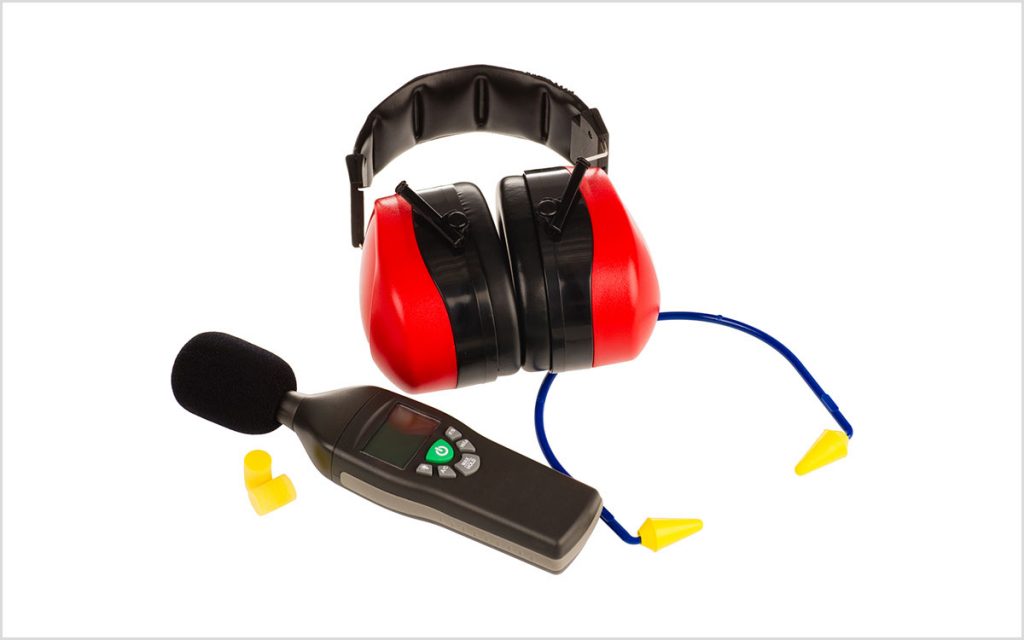A noisy workplace isn’t all that great for your ears (or your concentration, for that matter). Even modest noise, when experienced for eight hours a day, can begin to undermine the health of your hearing. That’s why it’s pretty smart to start asking questions like, “what level of hearing protection do I need?”
Many of us probably didn’t even know there were multiple levels of hearing protection. But it makes sense when you stop to think about it. A jet engine mechanic is going to require a different level of protection than a truck driver.
Levels of hearing damage
The basic rule of thumb is that at 85 decibels (dB) sound can start damaging your ears. We’re not really used to thinking about sound in decibels (even though that’s, you know, how we measure sound–it’s just not a number we’re used to putting into context).
Eighty-five decibels is about how loud city traffic is when you’re sitting inside your car. No biggie, right? Wrong, it’s a big deal. At least, it’s a biggie after eight hours or so. Because it’s not just the loudness of the noise that you need to be aware of, it’s the duration of exposure.
Common danger zones
If you’re exposed to 85 dB of noise for eight hours a day or more, you should probably think about wearing hearing protection. But that’s not the only threshold you should be aware of. If you’re exposed to:
- 90 dB (e.g., lawnmower): Anything over four hours is considered harmful to your hearing.
- 100 dB (e.g., power tools): Anything over one hour is considered harmful to your hearing.
- 110 dB (e.g., leaf blower): Anything over fifteen minutes is considered harmful to your hearing.
- 120 dB (e.g., rock concert): Any exposure can cause damage to your ears.
- 140 dB (e.g., jet engine): Any exposure can cause damage and may even cause immediate pain.
You’ll want the hearing protection you wear to be sufficient to bring the decibel level below that 85 dB level, especially if you are exposed to those sounds for any duration.
Find a comfortable fit
The effectiveness of hearing protection is measured by something called a Noise Reduction Rate, or NRR (I know, I’m throwing all kinds of acronyms at you today). The higher the NRR, the quieter your world will become (temporarily).
It’s incredibly important that you choose hearing protection with a high enough NRR to keep you safe (and your workplace will usually make recommendations about what level might be appropriate).
But there’s another factor to consider as well: comfort. It turns out, comfort is incredibly important to keeping your ears healthy. Why? Because if your hearing protection is uncomfortable, you’re not going to wear it.
Hearing protection options
You’ve got three basic options to choose from:
- Earplugs that sit within the ear canal.
- Earplugs that sit just outside the ear canal.
- Earmuffs.
There are advantages and disadvantages of each type of protection, but much of your hearing protection decision will come down to personal preference. For some people, earplugs are a little icky and irritating, so they’d be better served with earmuffs. Other people might appreciate the leave-them-in-and-forget-them approach of earplugs (obviously, you won’t want to forget them for too long… you should take them out at the end of your workday. And clean them).
Find a constant level of hearing protection
Comfort is important because any lapse in your hearing protection can lead to damage. If you take your earmuffs off for ten minutes because they’re heavy and scratchy, your ears can suffer over the long run. So the most important decision you can make is to select hearing protection that you’re comfortable leaving in place during your workday.
The world is a raging inferno of noises. But you want to be able to hear it as well as you can (it’s a beautiful inferno, usually). Investing in the level of hearing protection you need can help keep your ears happy and healthy.


